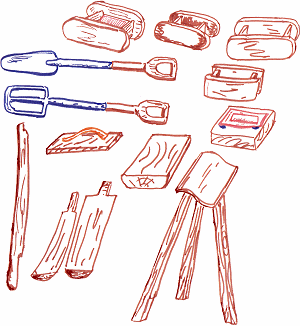|
Brick making is very old, and derives from the availability of clay. Once clay with straw and cow dung was made into building blocks that had to be protected from the wet by lime wash. Much later a pug mill could take river silt and prepare it, and the brickmaker had wooden and iron lined moulds into which it was put. The brick pressed, it would dry and shrink, a strike removing excess. The brick was then dried further in open sided shelters for about four days. Some two thousand or so bricks a day could be produced by three men. The rural kiln might take over 30,000 bricks and firing took a week. The tendency was for brick making and kilns to grow in size and serve and ever wider area as bricks became more in need, especially with industrialisation.
|

